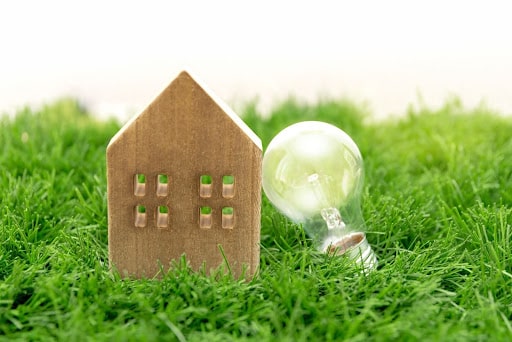For Indiana homeowners, fluctuating weather often means unpredictable utility bills. This makes energy efficiency more than just a buzzword—it’s a practical strategy for saving money, improving daily comfort, and increasing your home’s resale value.
But a common question we hear is: are energy-efficient upgrades a smart investment, or just an expensive add-on? When you’re focused on building an affordable home, it’s crucial to know which features offer real returns.
At Value Built Homes, our mission is to make homeownership in Indiana stress-free and affordable. This guide breaks down which popular energy-efficient upgrades—from smart thermostats to modern insulation—deliver the most bang for your buck and how our building process makes them an attainable part of your new home.
Why Today’s Homebuyers Are Prioritizing Energy Efficiency
Energy-efficient features do more than just lower energy consumption; they directly address the core priorities of modern homebuyers. While the exact impact on a home’s final price can vary with market conditions, these upgrades consistently boost buyer confidence and make a property far more attractive. Here’s a breakdown of the four key drivers behind this trend.
The Appeal of Lower Monthly Bills
The most compelling reason for many buyers is simple economics. With retail electricity prices steadily rising, prospective homeowners are increasingly focused on finding properties with predictable, manageable long-term expenses. An energy-efficient home promises exactly that. Features like high-efficiency HVAC systems, upgraded windows, and solar panels signal significant future savings, which directly appeals to budget-conscious first-time buyers and established families alike. This potential for long-term savings often translates into a higher perceived property value and a willingness to pay a premium upfront.
The Promise of Enhanced Comfort
In a region like Indiana with its fluctuating climate, home comfort is paramount. Energy efficiency isn’t about compromise; it’s about creating a superior living environment. A well-insulated and properly sealed home with an efficient HVAC system maintains consistent temperatures year-round, eliminating frustrating drafts and hot or cold spots. This tangible improvement in daily comfort is a powerful selling point that buyers can easily visualize and value.
The Growing Importance of Sustainability
Beyond the practical benefits, environmental consciousness is a significant factor for a growing number of families. Many modern buyers actively seek ways to reduce their carbon footprint. A home equipped with sustainable features—such as ENERGY STAR-certified appliances, renewable energy systems, and airtight construction—sends a strong message. It showcases a commitment to a greener lifestyle, an appealing prospect that can make your property stand out to this expanding demographic.
A Sign of a Well-Maintained Home
Finally, energy-smart upgrades act as a powerful signal of quality and care. When potential buyers see thoughtful, reliable improvements, it suggests that the entire property has been well-maintained. This reduces their concerns about hidden issues or expensive future repairs. Recognizable certifications, like an ENERGY STAR label, provide an extra layer of reassurance, giving buyers confidence that the upgrades were done correctly and will deliver a reliable return—making them more comfortable with their investment.
The Most Impactful Energy-Efficient Upgrades for Your Home
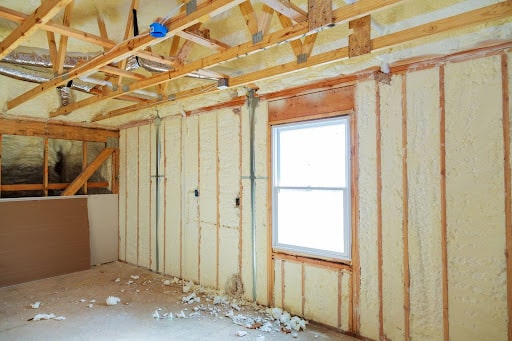
Upgrades that improve energy efficiency can be broadly grouped into high-impact investments and smaller-scale improvements. Both approaches contribute to reducing monthly utility costs and increasing a home’s market appeal.
Solar Panels
Solar panels not only help offset electric bills but also provide a sustainable edge. While the initial installation cost may be high, many homeowners recoup these expenses through long-term energy savings and local or federal incentives.
Smart Thermostats
Smart thermostats enhance efficiency by adapting heating and cooling schedules to suit your lifestyle. With internet connectivity for remote adjustments, these devices help control energy usage and can integrate well with other smart home systems, appealing particularly to tech-savvy buyers.
Energy-Efficient Windows
Windows equipped with low-E coatings and gas-filled panes help maintain a consistent indoor temperature, thereby decreasing the workload on HVAC systems. Properly installed energy-efficient windows are especially beneficial in Indiana’s varied seasonal weather conditions.
LED Lighting
LED bulbs use significantly less energy compared to traditional incandescent bulbs, and their longer lifespans help reduce both utility and replacement costs. Upgrading your lighting is an inexpensive yet effective first step toward greater energy efficiency.
High-Efficiency HVAC Systems and Appliances
Replacing outdated HVAC systems or household appliances with models certified by ENERGY STAR can yield measurable energy savings. The resulting lower utility bills and enhanced reliability contribute to increased buyer interest.
Improved Insulation
Proper insulation plays a crucial role in both reducing energy waste and enhancing comfort by keeping the home warm in winter and cool in summer. Improving attic and wall insulation can lead to significant savings on heating and cooling costs.
Weather-Stripping and Sealing
Small projects such as sealing gaps around doors and windows are an inexpensive way to reduce unwanted heat loss. Even minor sealing improvements can result in noticeable energy savings.
Calculating the Return: Are Energy-Efficient Upgrades Worth the Cost?
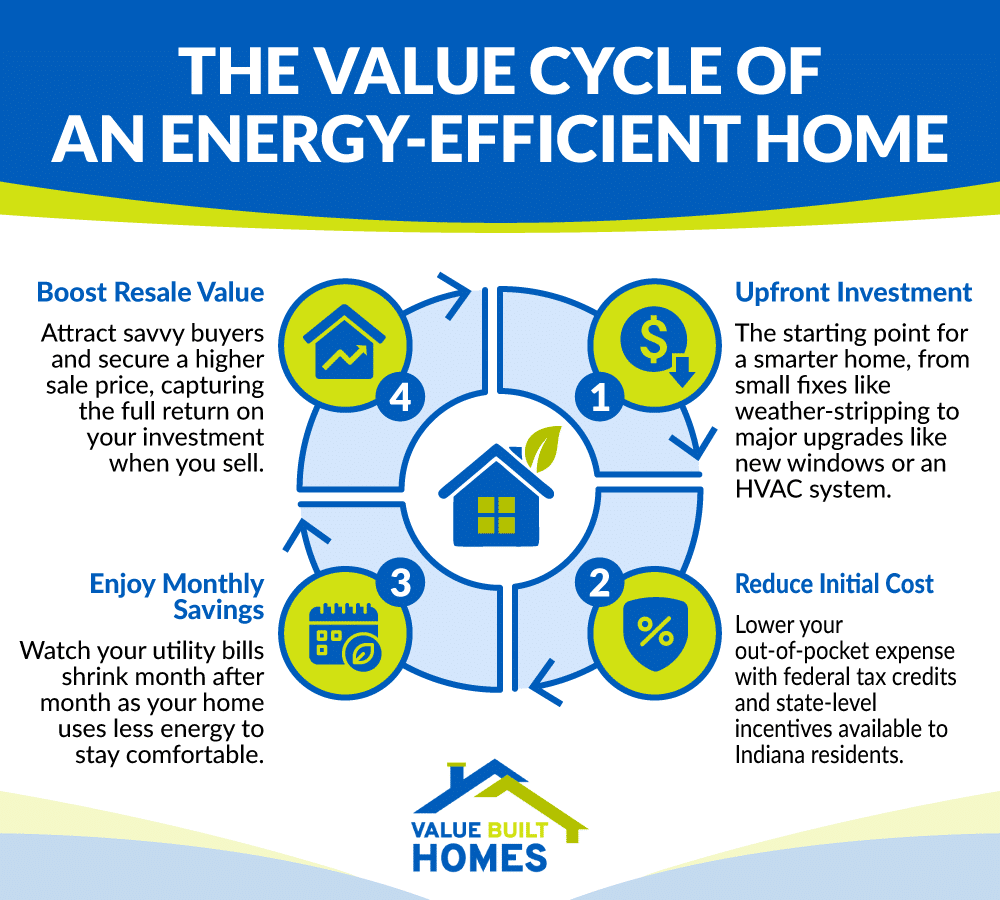
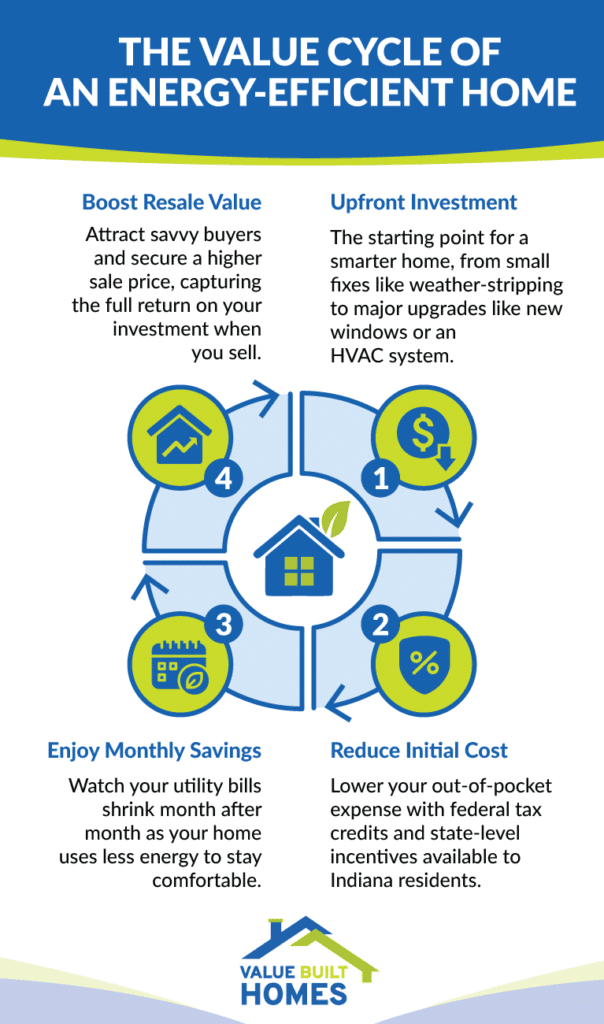
While the benefits of energy efficiency are clear, homeowners rightfully ask: what is the financial return? The answer lies in a complete picture that balances the initial cost with a combination of immediate incentives, long-term savings, and a final boost in property value.
1. The Upfront Investment
It’s true that many energy-efficient projects require an initial financial outlay. This investment can range from small, highly accessible improvements like installing LED bulbs and weather-stripping to larger commitments such as a new high-efficiency HVAC system or solar panel installation. The key is to see this not as a sunk cost, but as the starting point for generating future value.
2. Offsetting the Initial Cost with Incentives
Fortunately, homeowners rarely have to bear the full cost alone. A range of resources can significantly reduce upfront expenses. Federal programs, such as the Energy-Efficient Home Improvement Credit, offer substantial tax incentives for qualifying upgrades like new insulation, windows, or doors. On a local level, programs highlighted by the Indiana Office of Energy Development and databases like the Database of State Incentives for Renewables & Efficiency (DSIRE) can help you find state-specific grants and rebates that make these projects more affordable.
3. Long-Term Savings Through Lower Utility Bills
Once the upgrades are in place, the return on investment begins to accumulate month after month. Reduced energy consumption leads directly to lower utility bills, freeing up cash flow and helping to justify the initial cost. Over the lifespan of the improvements, these cumulative savings can be substantial, often paying back the entire cost of the project and continuing to save you money for years to come.
4. Recouping the Investment at Resale
The final piece of the financial puzzle materializes when it’s time to sell your home. Buyers value predictable monthly costs, and a property with verifiably lower energy bills is a powerful asset in a competitive market. This desirability often translates directly into a higher asking price and can even shorten the time your home spends on the market. By enhancing final sale negotiations, you can recoup a significant portion—or in some cases, all—of your initial investment, making energy-efficient upgrades one of the smartest financial decisions a homeowner can make.
The Smartest Approach: Building Energy Efficiency in from Day One
Building a new home presents the ideal opportunity to integrate energy-saving features from the start. Builders can select high-performance materials, incorporate HERS-rated construction practices, and implement state-of-the-art HVAC systems to minimize energy consumption while maximizing comfort.
At Value Built Homes, our design philosophy includes streamlined floor plans that reduce construction waste and optimize energy efficiency. These simplified processes allow us to maintain affordability while delivering the high-quality craftsmanship that today’s buyers expect. By carefully selecting materials—such as advanced insulation and strategically placed windows—new homeowners step into properties designed to minimize energy waste right from move-in.
The National Association of Home Builders emphasizes that planning for energy efficiency early in the construction process can help avoid costly retrofits later. Proactive measures such as optimized site orientation and airtight construction ensure enduring, cost-effective results that continue to attract future buyers.
Common Misconceptions About Energy-Efficient Upgrades
Despite the growing adoption of energy-efficient measures, several misconceptions persist:
- “They’re always too expensive.”
- While full-scale solar arrays can represent a significant financial commitment, many incremental improvements—such as utilizing local incentives for upgrades—are cost-effective and easy to implement.
- “They reduce comfort.”
- In fact, modern upgrades like advanced insulation, proper air sealing, and high-efficiency HVAC systems generally enhance indoor comfort.
- “Older homes can’t be improved.”
- Most properties, regardless of age, can benefit from updates such as sealing drafts, upgrading appliances, or installing better insulation without a complete renovation.
- “Only eco-conscious buyers care.”
- Energy efficiency appeals broadly to buyers seeking lower utility costs, modern functionality, and greater comfort in addition to environmental benefits.
Understanding these facts helps homeowners weigh the benefits adequately and align energy upgrades with their property’s unique needs.
Tips for Homeowners Considering Energy-Efficient Upgrades
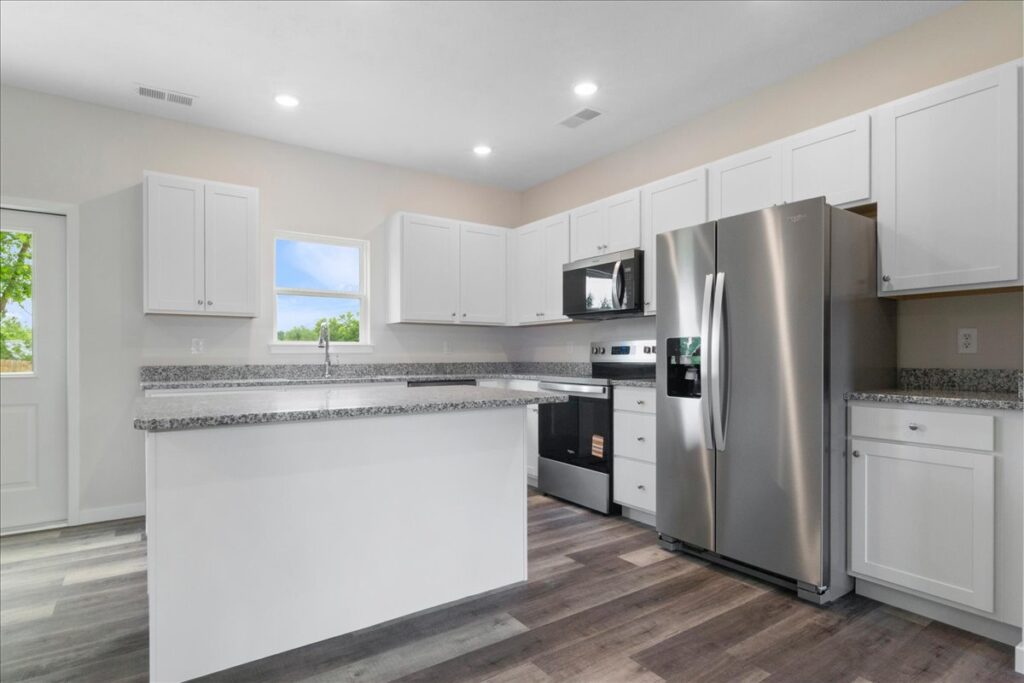
Define Your Goals
Decide whether your focus is on reducing monthly expenses, increasing resale value, or improving overall home comfort. Clear objectives will help guide your investment decisions.
Assess Your Climate and Home’s Unique Needs
A professional home energy audit can identify areas of inefficiency such as heat loss or equipment underperformance. Tailoring improvements to address these issues maximizes both comfort and cost savings.
Start Small and Scale Gradually
Simple measures, like replacing incandescent bulbs with LEDs or applying weather-stripping, can yield quick savings. These initial steps build confidence and set the stage for larger projects in the future.
Work with Experts
Consulting with qualified contractors or energy auditors ensures that improvements adhere to industry best practices. Their expertise can also help you navigate local incentives, tax credits, and rebate programs.
Compare Financing Options
Investigate low-interest loans, state grants, or manufacturer rebates that help reduce the net cost of energy upgrades. These financial tools can accelerate your project timeline without straining your budget.
Monitor and Track Performance
Regularly review your energy consumption through smart meters or thermostat data. Monitoring your usage not only confirms that your upgrades are effective but also provides useful information when marketing your home.
Document Your Upgrades
Keep detailed records of all improvements, including receipts and warranty information. This documentation can reassure potential buyers of the quality and professionalism of the work performed, potentially justifying a higher sale price.
Integrating Energy Efficiency for a Sustainable Future
Energy-efficient upgrades offer substantial benefits including reduced utility costs, enhanced comfort, and potentially higher resale values—especially in regions like Indiana where weather extremes demand robust, cost-effective solutions. From swapping out lighting for LEDs to investing in renewable energy systems, these improvements can lower monthly expenses, reduce environmental impacts, and support a higher market value.
At Value Built Homes, we are committed to integrating energy efficiency into our standardized construction process, ensuring that our homes not only meet modern demands for affordability and quality but also stand out in the competitive Indiana market. Contact our team to learn more about our approach or to begin planning your next energy-efficient home project.

